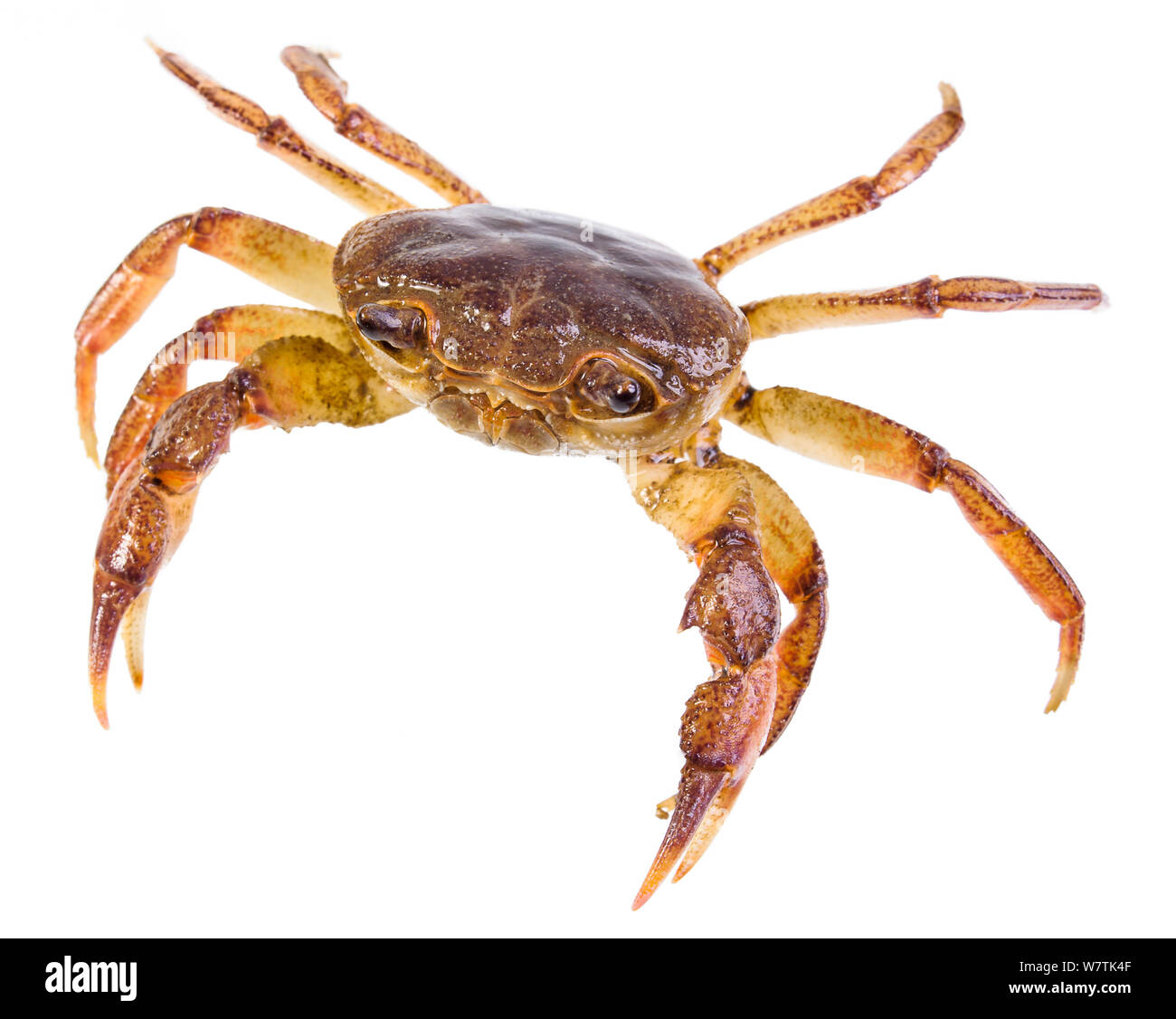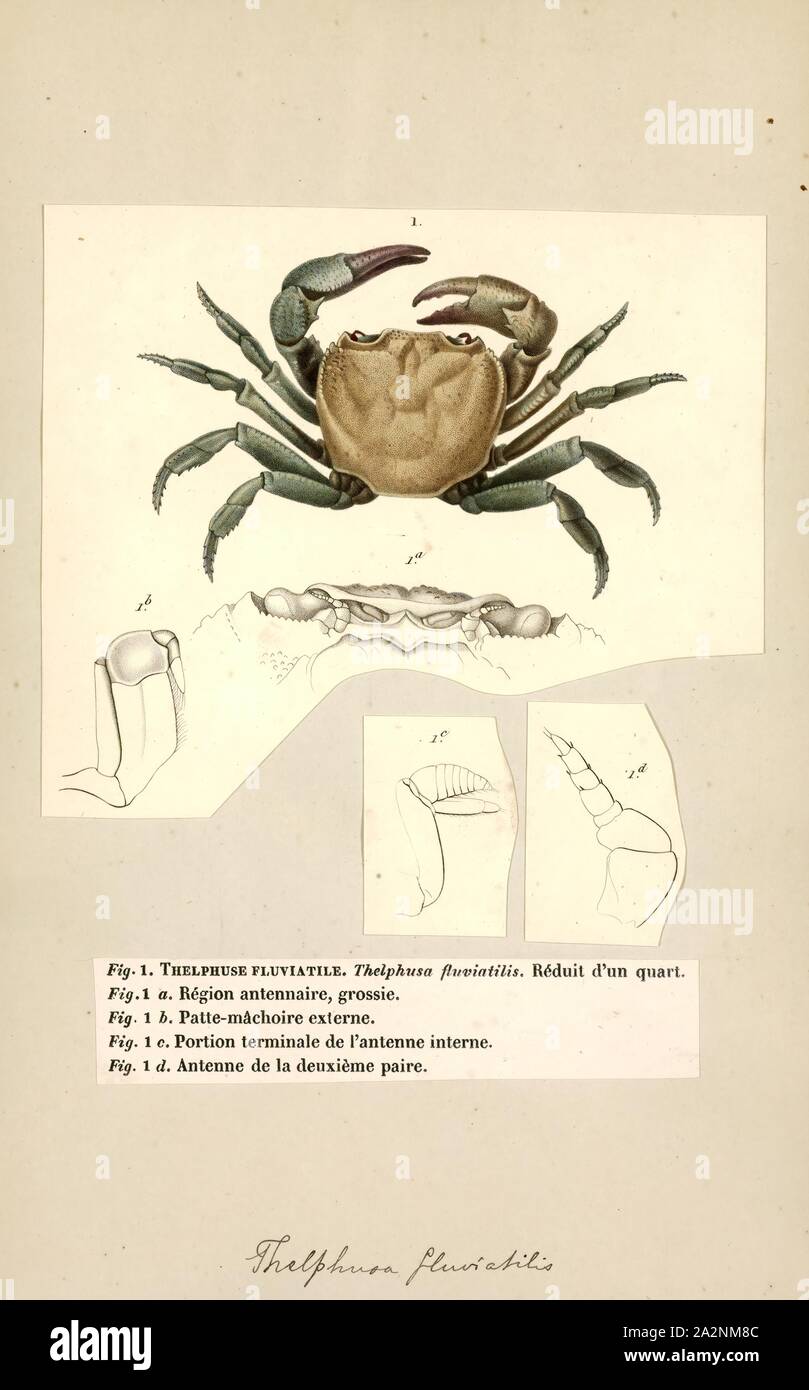The river crab is a crustacean linked to streams and creeks with running and clear water and the bottom of pebbles, sand and silt. The watercourses must also have riparian vegetation that guarantees good levels of soil moisture even in summer. The ecological requirements of the species limit its diffusion to the hilly and high plain stretches of the water streams.
The body is divided into three parts: head, thorax and abdomen (or pleon). Head and Chest are fused together in a very robust structure called 'cephalothorax'; this is formed by a hard protein substance called chitin. The cephalothorax has a quadrangular shape with a color ranging from dark orange to yellowish-brown to greenish-brown.
In the cephalothorax are the sensory structures or a pair of antennae, a pair of antennules and the compound eyes, supported by a peduncle. These can be portrayed in orbital cavities. On the cephalothorax also insert the limbs, in number of 5 per side. The first pair has turned into claws that are used to capture prey as well as defense. The other four pairs are for locomotion.
The abdomen is folded under the cephalothorax; in the females the four segments that compose it are very developed and covered by bristles that hold the eggs in a sort of 'incubator pocket'. In the males the abdomen is triangular and much narrower.
The mouth apparatus, of chewing type, consists of a pair of jaws and two pairs of jaws. The river crab is an omnivorous animal and its diet includes insects, molluscs, earthworms, tadpoles, small fish and dead animals. It also behaves as a detritivore and can be observed while 'grazing' on substrates covered with algae or mosses. Crabs have a great ecological value as recyclers and degraders within the food chain. The species is active from spring to autumn. It is a mainly nocturnal animal therefore spends the day hidden under the stones and between the roots of the trees or in the den (which digs in the banks of the watercourse). The activity of excavation and construction of the dens can be interpreted as an adaptation that the species has developed in order to overcome particularly dry periods.
The river crab normally comes out to 'hunt' after sunset; in the night hours, in fact, the temperatures are lower and the higher the humidity of the air. It can therefore be said that it has an amphibious behaviour and can be observed also far from the aquatic environments as it is much carried to the terrestrial walking.
The males are normally bigger than the females and however, having the same size, have more developed claws.
The reproduction takes place in the summer period. The male carries 2 pairs of copulatory styles in the abdomen with which he conveys to a bag of sperm in the female seminal receptacle. The sperm is stored by the female in the 'spermateches'. Fertilization of the eggs is therefore subsequent to mating. The female can produce up to 200 eggs from which hatch, after about 40 days of incubation, small 'crabs' similar to the adult that are kept inside the abdomen for some weeks. During the reproductive period, males can also make long movements to increase the probability of meeting receptive females.
During the growth, the crab makes moults with which the cuticle, which constitutes the exoskeleton, is renewed. The animal secretes an enzyme that dissolves the inner layer of the exoskeleton and produces a new coating under the old one. The river crab is an endangered species as the suitable environments are in strong contraction due to anthropic causes. The species is very sensitive towards the pollution, the decrease of the water courses and the cuts of the riparian vegetation. To these factors is added the poaching.

